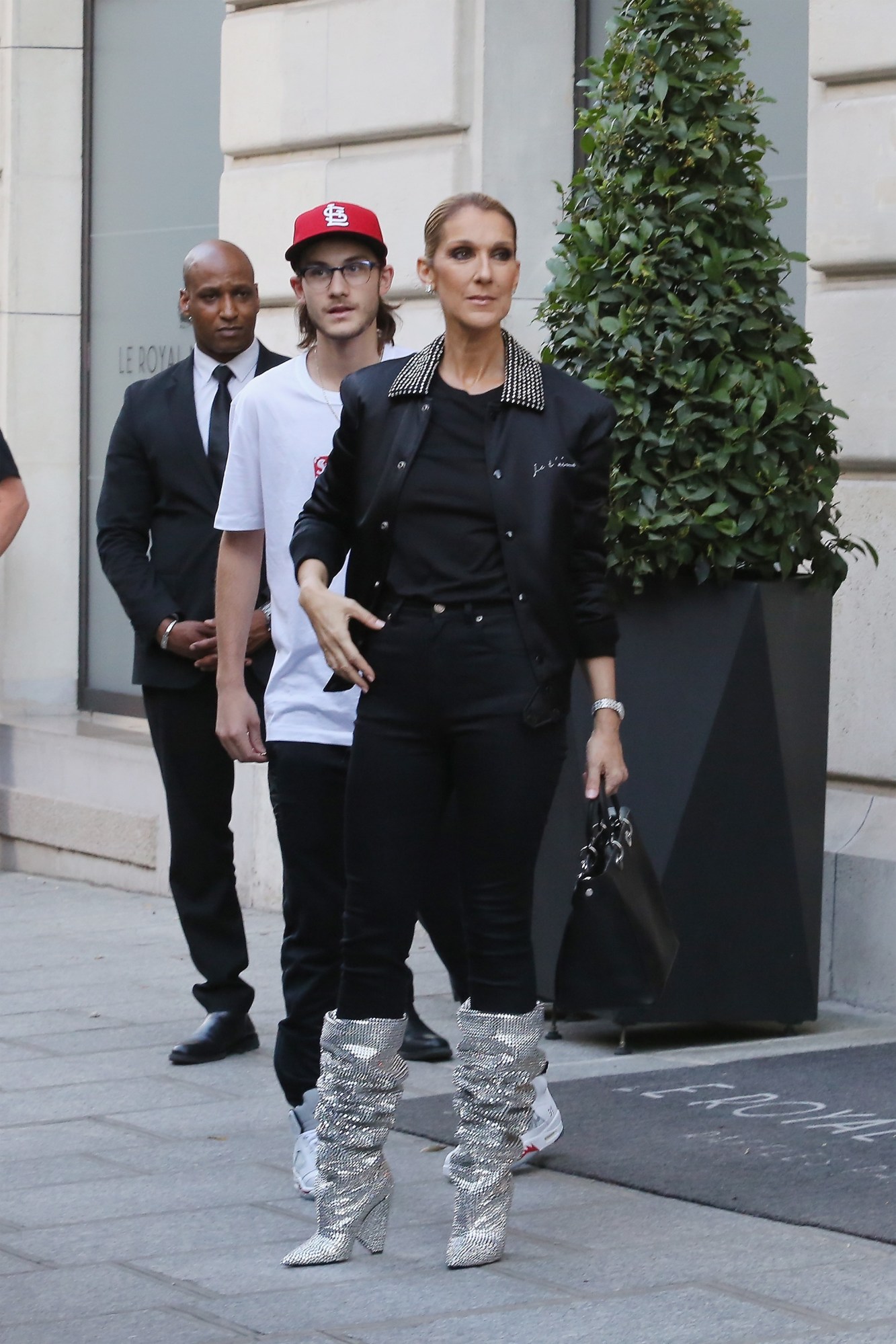Last week Céline Dion unveiled her revolutionary kids’ line CELINUNUNU via a campaign video that’s, uh, surreal. With perfume-ad, shimmery cinematography and a dark lullaby soundtrack, the plot centers on a smoky-eyed Céline breaking into a hospital’s nursery and magically transforming newborns’ pink-and-blue onesies into gender-neutral black-and-white fits. Before getting chased out of the hospital by security, Céline tells us the importance of letting the next generation of children have control over the course of their own lives in a dreamy voiceover that could easily have been lifted from a new Black Mirror episode .
Yet Céline’s dystopia is one that many, clearly, want to be a part of — the ad has gone viral and been positively received by social media and the LGBTQ community.
We all are finally aware of Céline Dion’s status as a couture queen on another level. Anyone can recall last year’s paparazzi shot of her wearing that Vetements Titanic hoodie, or the time she strolled through Paris (on a 75 degree day) in a floor-length python Balmain jacket and thigh-high boots. Her love of avant-garde fashion went uncelebrated until recently, but it was always there, and similarly, Céline was quietly chipping away at the gender binary long before she launched a viral children’s line.
Céline’s French-language song “Ziggy” perhaps marks the beginning of her journey into being an advocate for LGBTQ rights. The mind-meltingly campy video shows Céline daydreaming about a hot football player (the titular Ziggy), her hair dramatically twirling in the wind. She wanders into the guys’ locker room; watches Ziggy play football from the bleachers, and sees him homoerotically wrestle in sunlight with another dude. Because “Ziggy” is a song about a girl who’s falling for a gay guy — and how it’s no one’s fault that she likes him but he can’t like her, that he spends his nights dancing in discotheques with other boys. Years before actual gay artists could use male pronouns in songs, Céline was on the airwaves in 1991 turning a song about a gay boy into a subversive pop hit.
As the 90s went on, Céline Dion continued to dominate the charts worldwide with her love ballads. Yet her biggest commercial success came, of course, with Titanic’s “My Heart Will Go On.” Her biggest fashion moment arrived with that film, too, when she wore a backwards white Dior suit and matching fedora to the 1999 Oscars. Céline’s look was torn apart by mainstream fashion critics at the time, but she claims she never regretted the off-kilter, John Galliano-designed, gender-neutral look.
Moving into the 21st century, Céline’s music continued to gain prominence in the United States and English speaking countries. Drag queens specifically latched onto the brand of lovestruck-ness and luxury that she laced through her power ballads. Most recently, drag artist Milk paid tribute to Céline’s 2017 Met Gala look on the last season of Rupaul’s Drag Race. In 2008, Céline spoke with a small UK website about the mutual love between her and drag queens: “I’m somebody who has a strong personality and I’m strong in my gestures and I think they like that from me. I do look at what they do.”
Her music — the overwhelming romance of it — resonated with other artists with queer sensibilities, like filmmaker Xavier Dolan. A central scene of the director’s 2013 masterpiece Mommy is set to Céline’s “On Ne Change Pas.” When Steve, a violent and sad Québécois teen boy, puts the song on the cassette player, for a few moments he’s able to spin in bliss with his mother and neighbor Klya. The chaos of their domestic lives dissolves as their kitchen becomes a dance floor — for a few minutes with Céline, everything in their lives becomes alarmingly okay.
Last week in a CNN interview, Céline told the anchor her mission statement for the new line: “Let people be who they are as quick and soon as possible.” This thesis is arguably the same as the one at the heart of Dolan’s Mommy — above all else, let people choose who they want to become, because everyone should have the choice of controlling their own future.
As CELINUNUNU’s website says: “Fashion has the power to shape people’s minds. Inspire your children to be free and find their individuality through clothes.”

Céline is well aware of the role fashion can play in discovering your identity. When she melted our social media feeds with all those streetwear looks last year, it wasn’t some veiled attempt at recapturing public interest. Those looks — the Dior and the Vetements, the Gucci and the Louis — were what allowed Céline to find herself after losing her husband and brother to cancer within days of each other. Her stylist, Law Roach, said: “[Céline] also credits me, and what we did, to helping her through her grieving process.”
Céline understands the influence of fashion and what it should really be about. She doesn’t use clothing as a cynical crutch to “rebrand,” but rather sees it as this undeniable tool for us architect our images at our most fundamental level — and with CELINUNUNU, she’s now acknowledging that fashion can give us power before we can even walk.
